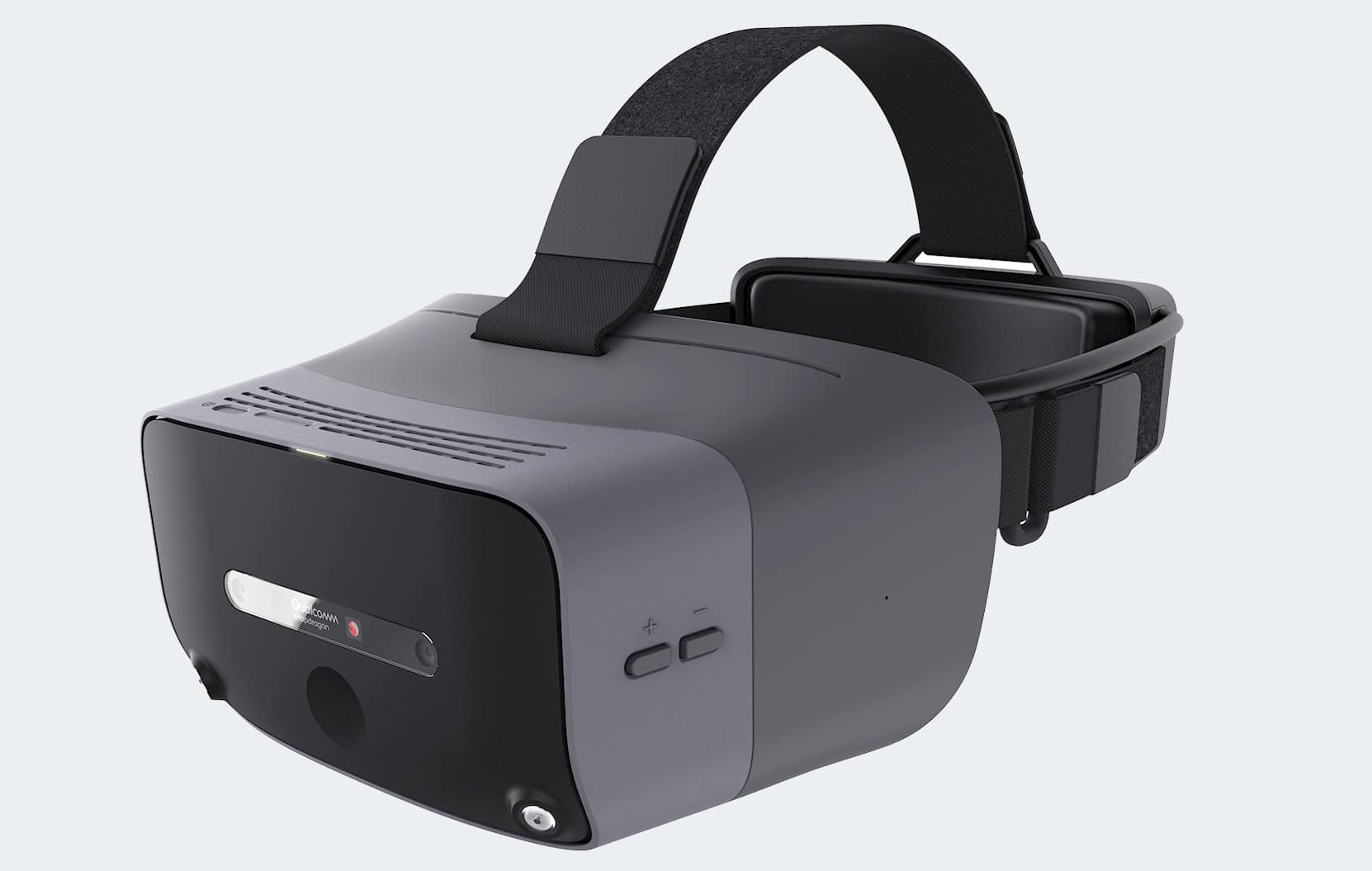Qualcomm is announcing a new reference design VR headset based on its XR2 chipset that’s said to be 5G-capable.
Qualcomm regularly debuts new reference designs to show what’s possible with its latest processors and this new VR headset design is its most advanced yet. The company’s processors are at the core of both the Oculus Go and Oculus Quest VR headsets, though both systems from Facebook use relatively older and more affordable processors from Qualcomm. The Snapdragon 820 series from Qualcomm was first announced in 2015 and Oculus Go uses the 821. 2019’s Oculus Quest uses the Snapdragon 835 which was announced in 2017. The XR2 platform Qualcomm is promoting in 2020 is a VR and AR-focused variant of the 865 which was first announced at the end of 2019.

This latest processor and reference design is said to be capable of split rendering over a 5G wireless connection — that is, some processing is done on the headset itself and some is done at a cell tower where power-hungry processors could theoretically draw photorealistic visuals for the headset. In theory, this would allow a relatively lightweight wireless VR headset to offer the kinds of impressive visuals which are currently delivered by an expensive high-powered PC over a wired connection. Qualcomm announced support for split rendering via a wireless connection to a nearby PC last year and the Pico Neo 2 is said to support this functionality.
It may be years still before this type of rendering pipeline is broadly available to consumers. Hugo Swart is in charge of the VR and AR efforts at Qualcomm and said in a conference call with journalists it is likely we’ll see trials of 5G for VR and AR uses this year and initial deployments sometime in 2021. Cellular network technology upgrades usually take place over many years and only some cities get support first. Likewise, Facebook and other companies building VR and AR headsets try to keep their hardware costs to a minimum to access the largest set of price-sensitive buyers. That usually means using the cheapest (sometimes older) components whenever possible.
Still, the latest reference design meshes together a series of technologies, some of which might make it into more headsets more quickly than 5G. The device uses NDI’s electromagnetic controller tracking, for instance, which we saw demonstrated at CES on the Pico Neo 2. This type of tech still tracks the controllers even if something — like your body — is between the headset and the controllers.
Here’s a video showing how that technology works.
In addition to 5G, Qualcomm says its reference design supports up to seven cameras. Two of them are internal for eye tracking and four are external, two each for showing passthrough views of the environment and two for head tracking. Device manufacturers could also also add face-tracking via another inward-facing camera. Qualcomm says the device also includes an infrared emitter to track hand movements and head movements with the same cameras and “2Kx2K per eye dual panel LCD support,” though the XR2 is supposed to be able to support even higher resolution panels as well.






























